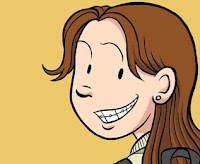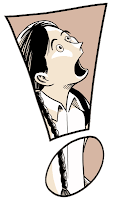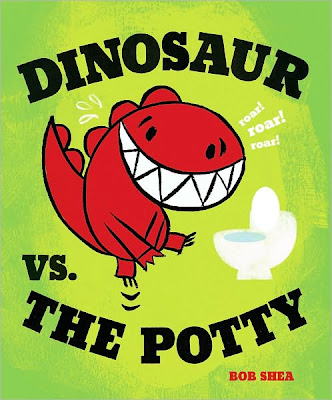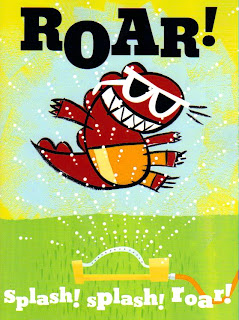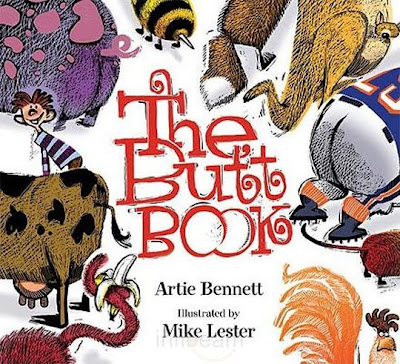Thank you, Tanya! I appreciate your generous reviews and kind words.
I made the bold pronouncement in my review of your newest book that I felt like you were superbly qualified to take over the mantle that Judy Blume has long held in the world of young readers. Did you read Judy Blume as a kid? What books from your childhood made a lasting impression on you?
I don’t know how to respond to such generous praise. Thank you. Judy Blume had such a profound impact on so many because she wrote with utter honesty about being a kid and teenager at a time when that wasn’t happening. Readers saw a true version of themselves in her words. They knew they could count on her to capture the truth of their feelings. I love how in addition to providing a safe place for young readers to explore their feelings in her books, Ms. Blume fights against censorship so young readers may continue to have safe places – books! – to explore difficult experiences and emotions.
While I don’t remember reading Judy Blume’s books as a child, I certainly devoured them as I got older and knew I wanted to be a writer.
A Hundred Dresses by Eleanor Estes resonated with me when I was young, because like the main character, I felt lonely and somewhat isolated. It’s a beautiful little book that remains relevant after all these years.
I also read and loved Mr. Popper’s Penguins by Richard and Florence Atwater, which, incidentally, informed the mother’s obsession in How to Survive Middle School. Ben and Me: An Astonishing Life of Benjamin Franklin by His Good Mouse Amos by Robert Lawson also made an impression on me. So imaginative!
When I was a kid, I loved reading ghost stories, puzzle books, comic books, world record books, etc. Reading was so much fun. That’s why I’m a big fan of allowing children to choose what they read. When those Book Club order forms come home, let your child choose. To celebrate a birthday or special occasion, take your child to a bookstore and let her choose. There’s power for that young reader in being able to make that choice.
I love that! I can't tell you how many times at work I hear a child begging for a book that a parent won't buy for whatever (usually valid, I'm sure) reason. But, it's such a thrill to be able to choose any book you want from the shelves. What young adult authors and books impress you today?
Books: A Crooked Kind of Perfect by Linda Urban, Granny Torrelli Makes Soup by Sharon Creech, Swear to Howdy by Wendelin Van Draanen, The Absolutely True Diary of a Part-Time Indian by Sherman Alexie, The Wednesday Wars by Gary Schmidt, Counting on Grace by Elizabeth Winthrop, The Underneath by Kathi Appelt, Peeling the Onion by Wendy Orr, Make Lemonade by Virginia Euwer Wolff, etc.
Authors: Jerry Spinelli, Christopher Paul Curtis, Rodman Philbrick, Donna Jo Napoli, Louis Sachar, Chris Crutcher, Jacqueline Woodson, Julie Anne Peters, Julius Lester, etc.
Excellent list and great inspiration! When did you know that you had a book inside you and what were the first steps you took to writing it out?
I wrote my first book when I was still in high school, then another one after college, etc. I have nearly half a dozen completed novels in a drawer. They were practice; I just didn’t know that at the time.
It takes a lot longer than you think to learn to create a solid story structure, build character arcs, discover emotional truths and all the other things that go into writing and revising a novel that will resonate with readers.
I sold my first novel at 40, and I’m still reading, writing and revising to improve my craft.
Wow! That's so good to know - that it doesn't just happen over night for most people. I guess you got your 10,000 hours in! Obvious question, I know, but I have to ask how you decided to have the main character of your first book, as if being 12 3/4 isn't bad enough, my mother is running for president, be the child of a politician?
That novel began as a short story I wrote for an anthology about mother/daughter relationships. I considered a mother who would be so busy with her career she wouldn’t have enough time to spend with her daughter. Can’t imagine being much busier than being a governor and running for president. I then told that story of longing for time with her mother through the eyes of the daughter. While the short story didn’t make it into the anthology, the editor of the anthology loved the main character and encouraged me to turn the story into a novel. I’m so glad she did!
That's so interesting! As a working mother I think about my kids and the time I am not spending with them constantly and I think you portrayed Vanessa's longing very effetively. Even in a time when the president is writing children's books, real life politics rarely makes it into fiction for young readers. I think that the way you presented politics in your book was really fascinating and I especially appreciated the letter to the reader from main character Vanessa at the end of the book that tells readers a bit about the constitution and where to go for more online information about government, the election process and American History (as well as information about spelling bees, scrabble and a recipe for lemon bars, all passions of Vanessa.) How did you determine what aspects of the presidential race, from the caucuses to the nominating convention, would make it into the book?
I appreciated the opportunity to make politics interesting and fun for young readers. It’s important that young people feel empowered and part of the process. I thought if I could get young readers excited about politics now, perhaps that would blossom into a lifelong passion.
I included whatever political elements were necessary to tell a good story, then, as you mentioned, I listed resources at the end of the book and on my web site for readers who wanted to learn more about politics, presidents, etc.
In both of your books I feel like you handle the potentially touchy subject of "girl likes boy" and "boy likes girl" with great delicacy and reserve. Vanessa goes from liking her dream guy, who turns out not to be a nice guy to noticing the kid who gets picked on who turns out to be a (really) nice guy. David goes from not liking girls at all to having this whole new world opened up to him by a friendly new girl. This could be fraught with so much more baggage, so much unnecessary information, yet I feel like you bring the perfect balance of innocence and, not to sound too goofy, wonder to the experience. How did you decide to include beginners romance as part of your stories and how did you decide what to leave out when it came to the boy/girl parts of the story in your books?
The romantic feelings are not, of course, the main plot of either story, but at that age, it’s a very important part of the wonder and discovery of growing up, so I included it in a natural way. Young people today often feel pressured to act way too grown up when it comes to dating. So in the pages of my books, they can know it’s okay to take things slowly and innocently.
I think you definitely presented it in a natural and slow paced way! What differences in writing about a boy/girl relationship when approaching it first from Vanessa's perspective then from David's did you notice?
I don’t know that there was a difference. In both cases, the characters were surprised/delighted by the attention of someone liking them. Those feelings were new for both characters and very exciting. In short, the quirky characters were delighted to have people appreciate them for who they were.
You know, I think I brought the idea of gender differences to my readings of the books, but looking back on it I agree that there isn't necessarily a difference between the two. I know that you have two sons, did you ask them personal questions to help you with David's burgeoning romantic feelings?
Lord no! I’ve always been an observer and thinker. I just happen to be fortunate to live with two teenage boys, who unwittingly provide great fodder for my novels.
Ha! I have to admit, when I first started reading as if being 12 3/4 isn't bad enough, my mother is running for president, not personally, but as a person who writes reviews of kid's books (mostly) for parents to utilize, I was concerned about some of the content. There were a few words and phrases that made the reviewer in me pause. However, as a parent of two teenagers and a six year old, I realize that these words and phrases were nothing new to my kids. How did you decide to makes this part of Vanessa's voice in your book? Have you had any complaints?
I wrote about Vanessa’s obsession with her boobs because a lot of girls that age worry about their boobs being too small or too big. It’s reality. And I think young readers appreciate reading about things that matter to them. I can’t tell you how many e-mails I got from young readers telling me they could relate to the whole “Boob Fairy” thing. It struck a chord of recognition.
And with How to Survive Middle School, I had a young boy write recently to thank me for using words and gestures that middle school kids would really use.
Parents/educators might not always like what young people know, think about, hear or talk about, but it is the way it is, whether authors write about it or not.
I never use certain words simply to be sensational. I use them only when it’s exactly what the character would say or feel.
That is excellent to hear and I'm glad to know you have had such wonderful response from your young readers. Did you have any reservations or concerns about making Jon Stewart and The Daily Show a major plot point in How to Survive Middle School? Most books for young readers don't usually mention specific contemporary celebrities. Did you worry about alienating any readers who had never seen his show or heard of him?
Yes, I always think twice about using a contemporary figure in my work. In my first book, Governor Schwarzenegger makes a guest appearance. In my newest book, it’s Alex Trebek, host of Jeopardy!. I don’t want to date my books, but in this case, it made perfect sense that David Greenberg would idolize Jon Stewart, so I went with it. Even if kids don’t know who he is, the story still makes sense.
Agreed! And I think that Governor Schwarzenegger will have a very long shelf life... Let's talk comedy. David and Vanessa are both funny, and in different ways. Vanessa has a sharp wit and expresses it through conversation or internal dialog. Despite his love of Jon Stewart and his type of humor, David's sense of humor is actually a bit less mature than Vanessa's, I'd say, which is interesting. Can you talk about your two main characters and their senses of humor?
The humor comes naturally through my characters and their particular quirks. Perhaps David’s is a bit less mature because he’s a smidge younger than Vanessa, and boys tend to mature a bit more slowly than girls.
True! Or, maybe it's just the difference between Vanessa's verbal humor and David's visual humor. More comedy: Growing up, the one way I could connect with my Dad was through comedy. I remember being in 4th grade and having him call me into the living room to watch Steve Martin perform "King Tut" on the Merv Griffin show. So love of comedy, the Steve Martin absurdist brand, the Saturday Night Live parodies and satire, the Tina Fey anything she does, the Jon Stewart intellectual humor, the David Sedaris sardonic wit, are serious currency in my family. My kids have been watching Monty Python since they were four and SNL not long after and would watch more Jon Stewart if we had cable. Is comedy currency in your family? What is your comedy lineage and what do you and your kids appreciate today?
You reminded me that I used to watch The Carol Burnett Show with my mom. We had so much fun laughing at the characters. It was a special time for me and my mom. As a teenager, my sister and I loved watching the TV showSoap. I know my husband used to enjoy watching The Bob Newhart Show with his parents.
Comedy is very important in our family, even though I didn’t think much about it until your question. We watch SNLand The Daily Show and so many other funny shows and movies together.
Humor is such a great way to deal with life’s challenges.
Defintiely! I found your portrayal of David's mother in HTSMS both poignant and sensitive. I have the feeling that the character you created for her is more that what ended up on the page. How did you decide what aspects of her personality to put in the story?
The mother’s problems are vital to the story in the way that they affect David and the dynamics of the whole family. While revising, my editor said again and again, “I just don’t feel I know the mother’s character well enough.” I had three completely different endings for the novel. It wasn’t until I truly understood the mother’s character and special issues that I was able to give the book the right ending and everything came together.
Everything definitely did come together! I love the ending that you chose! Can you tell us a little bit about your next book?
I wrote Olivia Bean, Trivia Queen in 29 days for NaNoWriMo (National Novel Writing Month) last year. And I’ve been revising it ever since. I love the characters in this book and thoroughly enjoy spending time in their world. It’s about a girl who absorbs trivia like a sponge and wants nothing more than to get on the TV quiz show, Jeopardy!. But a lot of challenges stand in her way.
You can meet Olivia and her quirky friends and family Spring 2012.
That's amazing! A novel in one month! Thank you so much for taking time to talk to me about your wonderful, amazing books. Can't wait for the next one!




